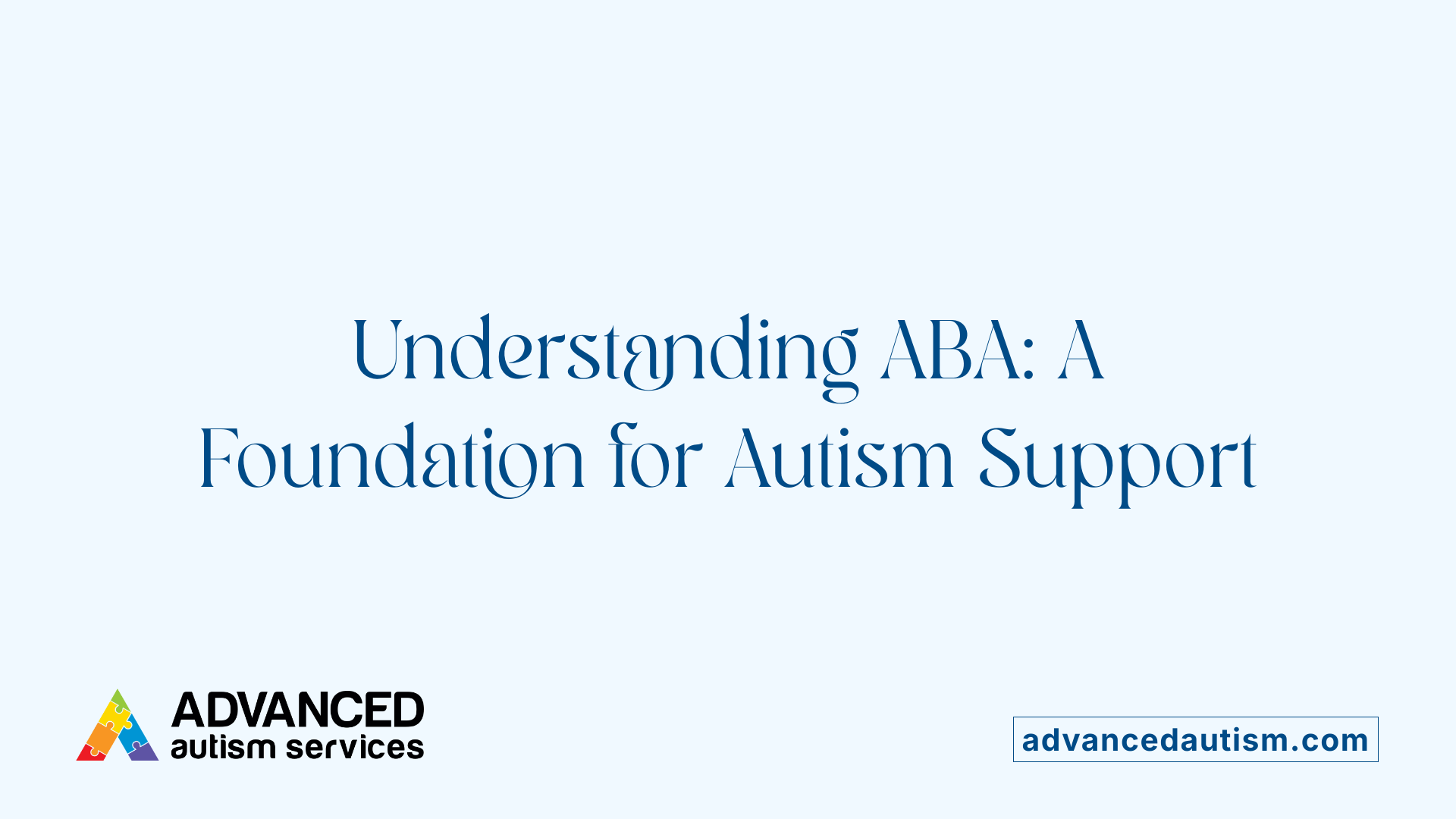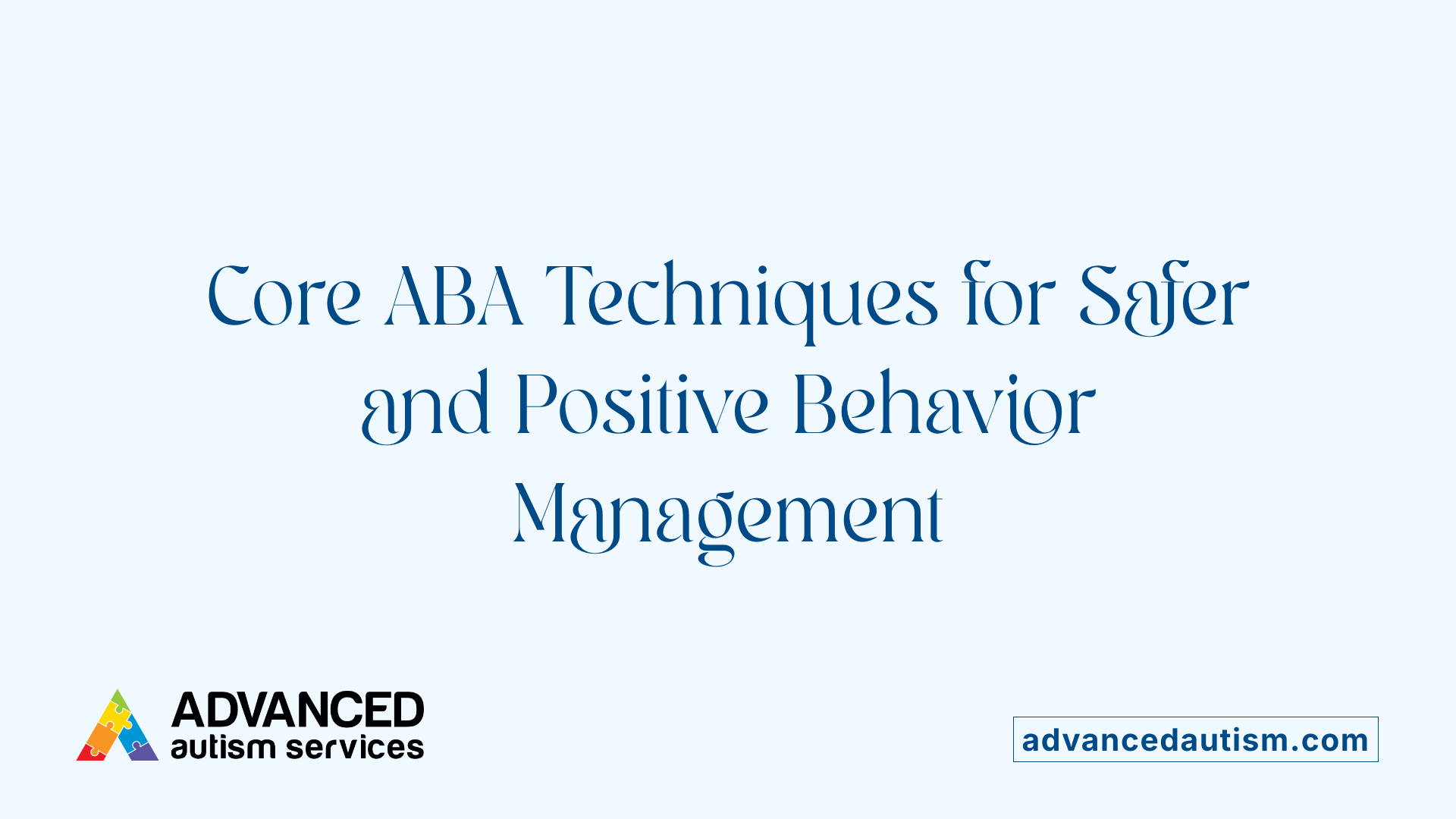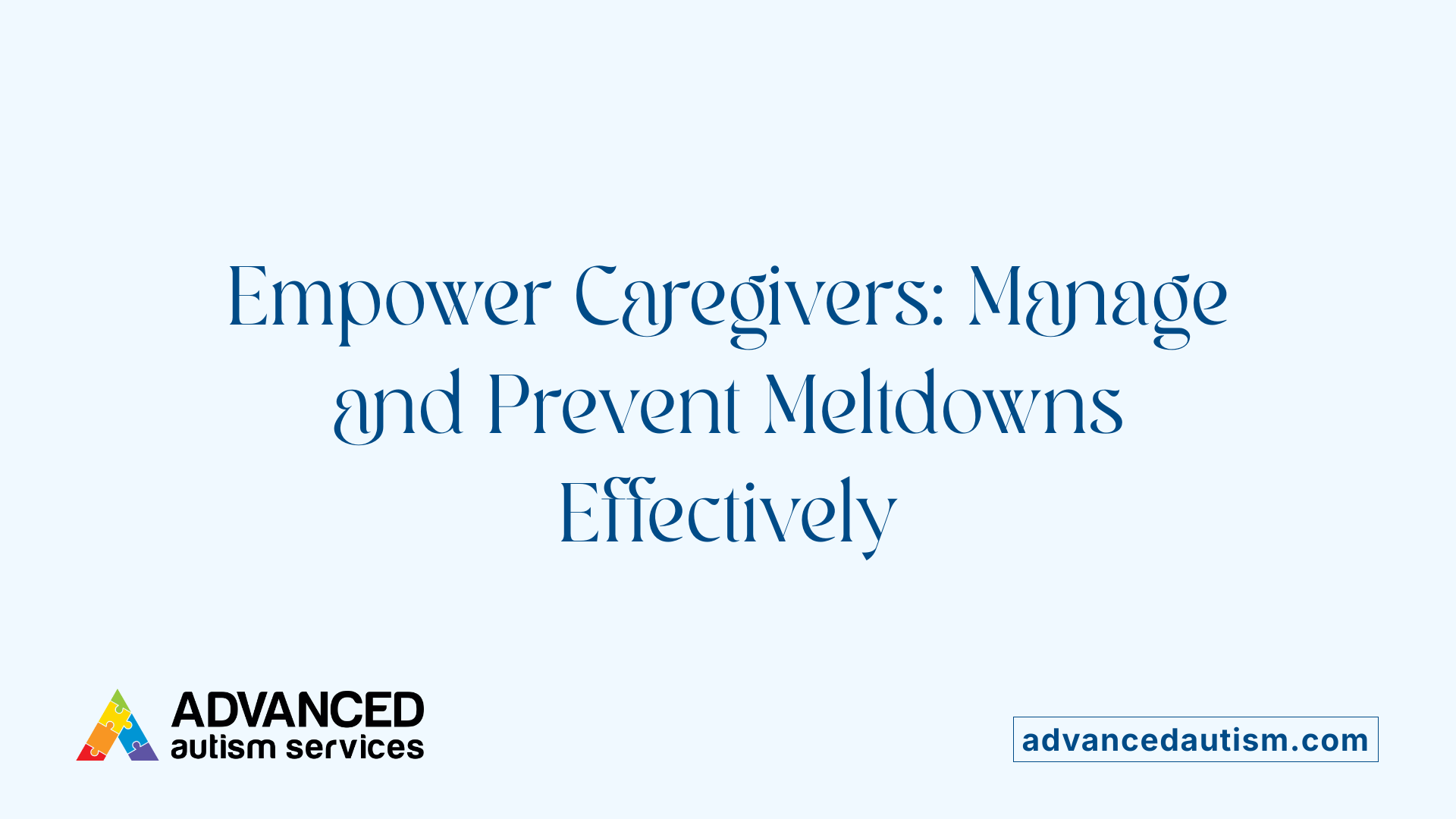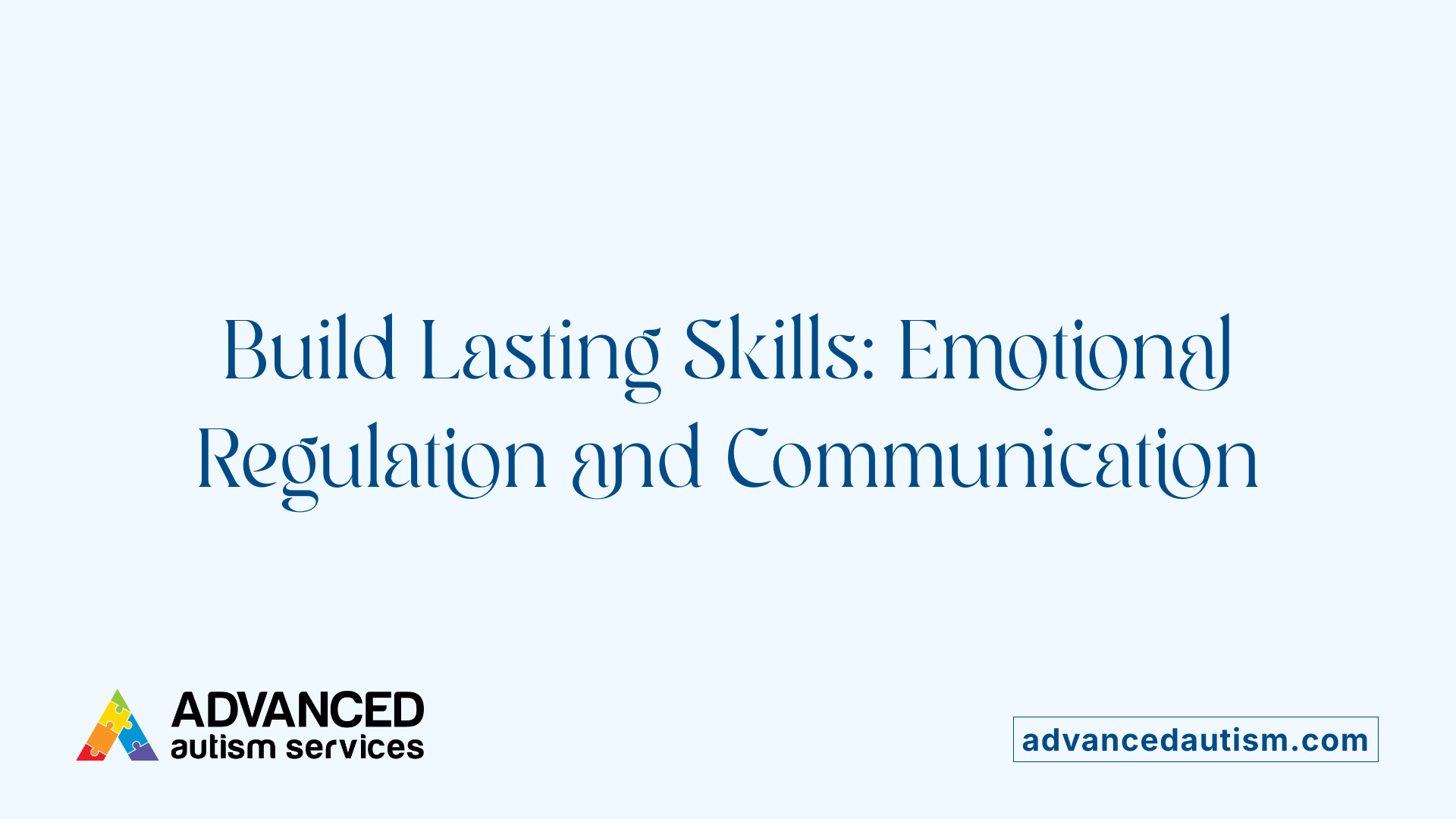How to Effectively Manage Meltdowns in Children with Advanced Autism
Strategies and Insights into Managing Meltdowns in Advanced Autism
Understanding and Addressing Meltdowns in Children with Autism
Meltdowns in children with advanced autism can be challenging for families and caregivers. These intense emotional episodes often stem from sensory overload, communication difficulties, and disruptions in routine. Applied Behavior Analysis (ABA) therapy offers evidence-based strategies to help manage and reduce the frequency and severity of meltdowns by teaching self-regulation, emotional expression, and communication skills. This article explores how ABA therapy and complementary behavioral techniques can effectively support children with advanced autism in managing meltdowns.
What is Applied Behavior Analysis (ABA) Therapy and Its Role in Autism Care?

Definition of ABA therapy
Applied Behavior Analysis (ABA) therapy is a scientifically supported method that focuses on understanding and modifying behavior through learning principles. It studies the relationship between behavior and the environment, applying strategies like positive reinforcement, prompting, and consistent feedback to encourage desirable behavior changes.
ABA's objectives in autism intervention
ABA therapy aims to help individuals with autism spectrum disorder (ASD) by addressing challenging behaviors and teaching new skills. Its objectives include improving communication, social interaction, emotional regulation, and daily living skills. By identifying triggers and behavioral functions, ABA creates personalized interventions that enhance independence and reduce problematic behaviors such as tantrums or meltdowns.
How ABA improves various skills
ABA techniques teach children to express their desires and emotions effectively, which helps reduce frustration and behavioral outbursts. It also provides structured environments with visual schedules and routines to increase predictability and lower anxiety. Functional Communication Training (FCT) and social skills coaching aid in improving communication and social understanding, while reinforcement and feedback promote safe and responsible behavior.
Evidence supporting ABA effectiveness
Research and clinical experience demonstrate that early and intensive ABA therapy produces significant developmental gains in children with autism. These gains include better emotional regulation, enhanced communication abilities, and more successful social interactions. ABA's consistent data-driven approach allows for ongoing adjustment of strategies, ensuring that interventions meet individual needs and maximize progress. Overall, ABA therapy is widely recognized as an effective, evidence-based framework for fostering growth and improving quality of life for individuals with ASD.
Qualified Professionals Delivering ABA Therapy: Who They Are and What They Do
Types of ABA Professionals
ABA therapy is mainly delivered by a team of trained specialists including Board Certified Behavior Analysts (BCBAs), behavior therapists, and Registered Behavior Technicians (RBTs). BCBAs often lead therapy planning and oversight, while behavior therapists and technicians primarily implement the treatment under supervision.
Qualifications and Certifications
BCBAs hold advanced degrees in behavior analysis, psychology, or related fields, have completed specialized coursework, and gained supervised experience before passing the credentialing exam by the Behavior Analyst Certification Board (BACB). RBTs and other technicians receive focused training and supervision to become certified through programs like BACB’s RBT credential or certifications from organizations such as QABA and BICC.
Roles in Therapy Implementation
Qualified ABA professionals design individualized intervention plans based on assessments, deliver therapy sessions, collect and analyze data on client progress, and adjust strategies accordingly. BCBAs also train and supervise therapy staff and provide guidance to families to ensure consistency across environments.
Ethical and Professional Standards
These professionals adhere to strict ethical codes emphasizing client dignity, confidentiality, and evidence-based practices. They maintain ongoing education, ensure informed consent, and commit to delivering therapy that promotes positive outcomes and wellbeing for children with autism.
This multidisciplinary approach ensures that ABA therapy is delivered effectively, safely, and tailored to each child's unique needs.
Core ABA Techniques for Managing Meltdowns and Challenging Behaviors

What are common methods and techniques used in ABA therapy?
ABA therapy employs a range of strategies to support children with autism in managing challenging behaviors such as meltdowns and tantrums. One of the primary methods is positive reinforcement, where desired behaviors are encouraged through rewards like praise, tokens, or toys. This approach motivates children to repeat appropriate actions by highlighting their benefits.
Visual aids and schedules are vital tools in ABA, offering clear, structured expectations through pictures, symbols, or charts. These visual supports increase predictability and reduce anxiety, which helps prevent meltdowns triggered by unexpected changes.
Prompting and fading techniques guide children through new skills by initially providing ample support (prompts) and then gradually withdrawing assistance (fading) to promote independence. This approach ensures children learn behaviors systematically with minimal frustration.
Antecedent manipulation involves modifying environmental factors that precede behaviors to reduce triggers for meltdowns or tantrums. Examples include using visual timers before transitions, offering choices to avoid power struggles, and controlling sensory input to prevent overload.
Lastly, Functional Communication Training (FCT) teaches alternative ways for children to express needs and feelings, such as through sign language, picture cards, or verbal expressions. This decreases frustration and improves emotional regulation by replacing challenging behaviors with effective communication.
Together, these ABA strategies create a supportive and responsive environment tailored to each child's unique needs, fostering safer and more positive behavioral outcomes.
Recognizing Triggers and Early Warning Signs of Meltdowns in Children with Autism

Sensory Overload Triggers
Children with autism often experience sensory overload as a primary trigger for meltdowns. Excessive noise, bright lights, strong smells, and certain textures can overwhelm their senses, leading to distress and eventual emotional outbursts. Identifying these environmental factors is crucial for prevention.
Changes in Routines
Disruptions or unexpected changes in daily routines commonly provoke meltdowns. Children with autism generally benefit from predictable schedules, and sudden transitions can increase anxiety and confusion, making it harder for them to regulate their emotions.
Communication Difficulties as Triggers
Many children with ASD face challenges expressing their needs and feelings adequately. When communication is hindered, frustration builds up, frequently resulting in meltdowns. ABA therapy emphasizes teaching effective communication skills to reduce these occurrences.
Physical and Behavioral Warning Signs
Early signs that a meltdown may be approaching include pacing, yelling, covering ears, rocking, hitting, or other self-stimulatory behaviors. Recognizing these indicators allows caregivers to intervene and apply calming strategies before escalation.
Importance of Proactive Record-Keeping
Keeping detailed records of when meltdowns occur, the antecedents, and the child’s behaviors aids in identifying patterns and individualized triggers. This information is vital for tailoring interventions and creating effective management plans.
Together, awareness of these triggers and early warning signs helps caregivers and therapists implement timely preventive measures, fostering a safer and more supportive environment for children with autism.
Differentiating Between Tantrums and Meltdowns: Implications for Management
What are the definitions and characteristics of tantrums?
Tantrums in children with autism are typically short-lived episodes characterized by behaviors aimed at achieving a specific goal, such as gaining attention or avoiding an undesired task. These behaviors may include crying, yelling, or other outbursts and are often manipulatively driven and purposeful. Tantrums serve as a means for children to communicate needs or desires when other communication methods may be difficult.
What are the definitions and characteristics of meltdowns?
Meltdowns, in contrast, are intense and longer-lasting emotional episodes that arise as involuntary reactions, often triggered by sensory overload or anxiety. Children experiencing meltdowns may display behaviors like pacing, yelling, covering their ears, or self-stimulatory actions such as rocking. These episodes represent a child being overwhelmed and are not goal-oriented or manipulative.
How do the motivations behind tantrums and meltdowns differ?
Tantrums typically have behavioral functions including access to items, obtaining attention, escaping unpleasant situations, or automatic relief from discomfort. They are driven by motivations aimed at controlling the environment. Meltdowns, however, stem from emotional overwhelm or sensory sensitivities and reflect an internal struggle rather than intentional behavior.
How does differentiating between tantrums and meltdowns aid intervention?
Recognizing the distinct nature of tantrums and meltdowns allows caregivers and therapists to tailor management strategies effectively. For tantrums, interventions like reinforcement strategies, functional communication training, and antecedent modifications are useful. For meltdowns, creating calm environments, using soothing sensory tools, and teaching emotional regulation promote recovery and coping. This differentiation enhances the precision of Applied Behavior Analysis (ABA) therapy techniques, supporting safer and more responsive care for children with autism.
Practical Strategies for Caregivers to Manage and Prevent Meltdowns

What is antecedent manipulation and how does it help?
Antecedent manipulation involves modifying environmental factors before a meltdown occurs. Caregivers can prevent meltdowns by using visual timers, offering choices, or reducing sensory overload through quiet spaces. Anticipating triggers helps lessen the intensity and frequency of emotional outbursts.
How do structured visual schedules and transition warnings support children?
Visual schedules with pictures or symbols create predictability and reduce anxiety in children with autism. Caregivers can provide warnings before transitions to prepare children for changes in routine, minimizing behavioral disruptions. These structured schedules foster a calm and secure setting.
What calming sensory tools are effective during meltdowns?
Using tools such as weighted blankets, noise-canceling headphones, and fidget toys can soothe sensory sensitivities. These calming items help children regulate overwhelming emotions by providing comforting tactile or auditory input, enabling a safer and more manageable meltdown experience.
What are effective communication methods during meltdowns?
ABA therapy emphasizes teaching children to express feelings through verbal means or alternative communication like sign language or picture cards. Caregivers using clear, calm communication can support children in expressing needs, which reduces frustration and prevents escalation.
How does positive reinforcement help manage behaviors?
Caregivers are encouraged to praise desirable behaviors using tokens, stickers, or small rewards. Consistent positive reinforcement motivates children to use appropriate communication and coping strategies, decreasing the likelihood of meltdowns over time.
Together, these strategies offer caregivers practical tools grounded in Applied Behavior Analysis principles to better understand, manage, and reduce meltdowns in children with autism.
Long-Term Skills Development to Reduce Meltdowns: Emotional Regulation and Communication

Teaching emotional recognition and expression
ABA therapy helps children with autism learn to recognize, describe, and express their emotions effectively. This skill development provides children with healthier ways to communicate feelings, which can reduce frustration and the frequency of meltdowns.
Functional Communication Training (FCT)
FCT is a critical ABA technique that teaches children alternative and effective ways to express their needs and desires. By using tools such as sign language, picture cards, or verbal expressions, children can replace tantrums with appropriate communication, thereby decreasing behavior linked to emotional outbursts.
Self-regulation skill development
ABA therapy consistently reinforces self-regulation skills through structured feedback and practice. Children learn to manage their own emotional responses and behaviors, promoting safer and more responsible conduct that benefits them in everyday life. While meltdowns may not be completely preventable, these self-regulation strategies are valuable lifelong tools.
Generalizing skills across settings
An essential component of ABA interventions is helping children transfer emotional regulation and communication skills to different environments and social contexts. Therapists focus on consistent routines and collaboration across home, school, and community settings to maintain and strengthen learned behaviors and reduce meltdowns over time.
Addressing Challenges in ABA Therapy and Ensuring Consistent Support
What are some challenges faced by individuals undergoing ABA therapy?
ABA therapy can be demanding for some children and families, owing to the intensity and length of sessions. Children may feel overwhelmed or resistant to certain techniques or transitions within therapy, leading to stress or discomfort. This makes early identification of such reactions critical to adjustment and success.
Family and caregiver involvement
Effective ABA therapy relies heavily on active participation from families and caregivers. They are essential in reinforcing skills learned during sessions and maintaining consistency across home and other environments. However, balancing this involvement with daily life can be challenging, requiring practical strategies and support from therapy providers.
Ethical considerations and controversies
Some concerns have arisen historically about ABA therapy's use of aversive methods or very strict protocols. Contemporary ABA practices emphasize positive reinforcement and individualized approaches to ensure that therapy respects the child’s dignity and emotional well-being. Open communication about these ethical considerations helps build trust.
Workforce consistency and quality
Variability in practitioner experience and high turnover rates may impact the continuity and quality of ABA services. Ensuring well-trained therapists and stable staffing can promote more consistent outcomes for children undergoing therapy.
Collaboration across environments
Coordinating efforts between therapists, families, schools, and other caregivers is vital. Collaboration helps maintain predictable routines and consistent behavior expectations, which reduces frustration and supports children’s progress. Sharing information and strategies across settings fosters a cohesive support network.
These combined efforts address common challenges, promoting a supportive environment where children with autism can develop skills effectively and with respect to their individual needs.
Supporting Children with Advanced Autism Through Informed Intervention
Effectively managing meltdowns in children with advanced autism requires a comprehensive understanding of behavioral triggers, individualized teaching techniques, and collaborative support from qualified professionals and caregivers. ABA therapy provides a well-researched framework that emphasizes proactive strategies such as antecedent modification, functional communication training, and emotional regulation skills development to reduce the frequency and intensity of meltdowns. By recognizing early warning signs and employing consistent, compassionate responses, families and therapists can foster safer and more predictable environments. Ongoing challenges in therapy underscore the importance of ethical practice, caregiver involvement, and interdisciplinary collaboration. Ultimately, a thoughtful application of these principles empowers children with advanced autism to better manage their emotions and thrive across settings.
References
- How ABA Therapy Can Help Prevent Another Meltdown
- Effective ABA Strategies for Dealing with Tantrums
- Temper Tantrums in Children with Autism
- Effective ABA Strategies for Dealing with Tantrums
- ABA for Tantrums and Meltdowns
- Treatment and Intervention for Autism Spectrum Disorder
- Concerns About ABA-Based Intervention: An Evaluation ...







